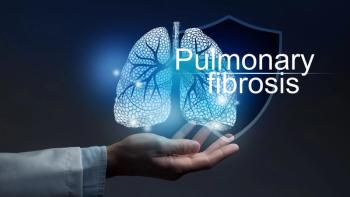
Equipment and Processing Report
- Equipment and Processing Report 04-21-2021
- Volume 14
- Issue 4
Package Authentication Depends on Multi-Level Tactics
Drug product security requires anti-counterfeiting techniques such as authentication throughout the supply chain.
On the Internet, dual-level authentication delivers more secure transactions. A similar multi-level strategy is needed to ensure the pharmaceutical product being dispensed to the consumer is the same one that left the factory.
The enhanced protection is needed because the COVID-19 pandemic and other forces are spurring growth in counterfeiting and gray market diversion. “Changing tariffs and Brexit also encourage counterfeiters,” reports Mark Manning, chief executive officer at iTRACE Technologies, a supplier of product authentication technology and partner with Global Automation and Identification Group, a specialist in anti-counterfeiting programs.
“Securing the supply chain must be part of the manufacturing process,” says Manning. Meeting the requirements of the Drug Supply Chain Security Act (DSCSA) in the United States and the European Union’s Falsified Medicines Directive (FMD) won’t completely solve the problem of counterfeiting. Loopholes in the laws mean “the supply chain isn’t as secure as we want it to be. Additional security steps will be needed,” explains Manning.
He advises starting at the beginning of the supply chain to secure the factory and production. He says, “Security needs to start before the product is made. Brand owners need to be able to validate the factory is secure. Starting with the ingredients enables a secure product all down the line to the patient.” Authentication from the beginning of the supply chain serves as the foundation of trust and depends on data. Then security must be maintained at each level of the supply chain, and each level has to work together.
Manning suggests that blockchain-based systems provide a solution. “Blockchain provides irrefutable proof of the existence of the product and tracks and traces it at every step so you know the product at the bedside is the same one that left the factory,” he explains. “That level of visibility is not something that can be done with a barcode or Datamatrix code. Barcodes and Datamatrix codes are open-source technologies and easily replicated and read by anyone. If I’m a counterfeiter, I can create my own barcode, based on the structure stipulated by the FMD or DSCSA.”
Unfortunately, says Michael Cizek, managing director and founder of Global Automation and Identification Group, “If the carrier for data can’t be trusted, then the data can’t be trusted.”
A multi-level strategy is needed. The iTRACE 2DMI technology is a hybrid technology relying on closed-source, proprietary software and an open hardware platform so the code is readable by virtually any reader, including smartphones. An iTRACE 2DMI code can be printed or laser etched by virtually any system, including desktop printers. Options include reproduction in very small (near-nano) spaces and with ultraviolet ink if covert coding is desired. When read, if the data generated by the iTRACE code matches the serialization, barcode, or Datamatrix code on the package, the product is authentic.
Another recent development in authentication technology, Covectra’s next-generation StellaGuard smart label and mobile authentication system, works in conjunction with its AuthentiTrack track-and-trace system. A free app allows consumers, field inspectors, and customs officials to scan a product barcode with their smartphone and verify authenticity in seconds (1).
The StellaGuard smart label combines a serialized QR barcode with a three-dimensional image of holographic “stars” embedded in a random, non-repeatable pattern at various levels and positioned inside a patented film. On the packaging line, cameras capture the star pattern on each product label and store it in the AuthentiTrack Cloud. When it’s time to authenticate the product, a smartphone scan of the label is compared to the scan captured on the packaging line (1).
Reference
1. Covectra, “Covectra Introduces Next Generation StellaGuard Smart Label and Mobile Authentication Solution to Combat Counterfeiting of Products,” Press Release, Feb. 22, 2021.
Articles in this issue
over 4 years ago
Evaluating Cold-Temperature Packaging Closure Systemsover 4 years ago
Tracking Technologies Safeguard Vaccine Cold ChainNewsletter
Get the essential updates shaping the future of pharma manufacturing and compliance—subscribe today to Pharmaceutical Technology and never miss a breakthrough.





